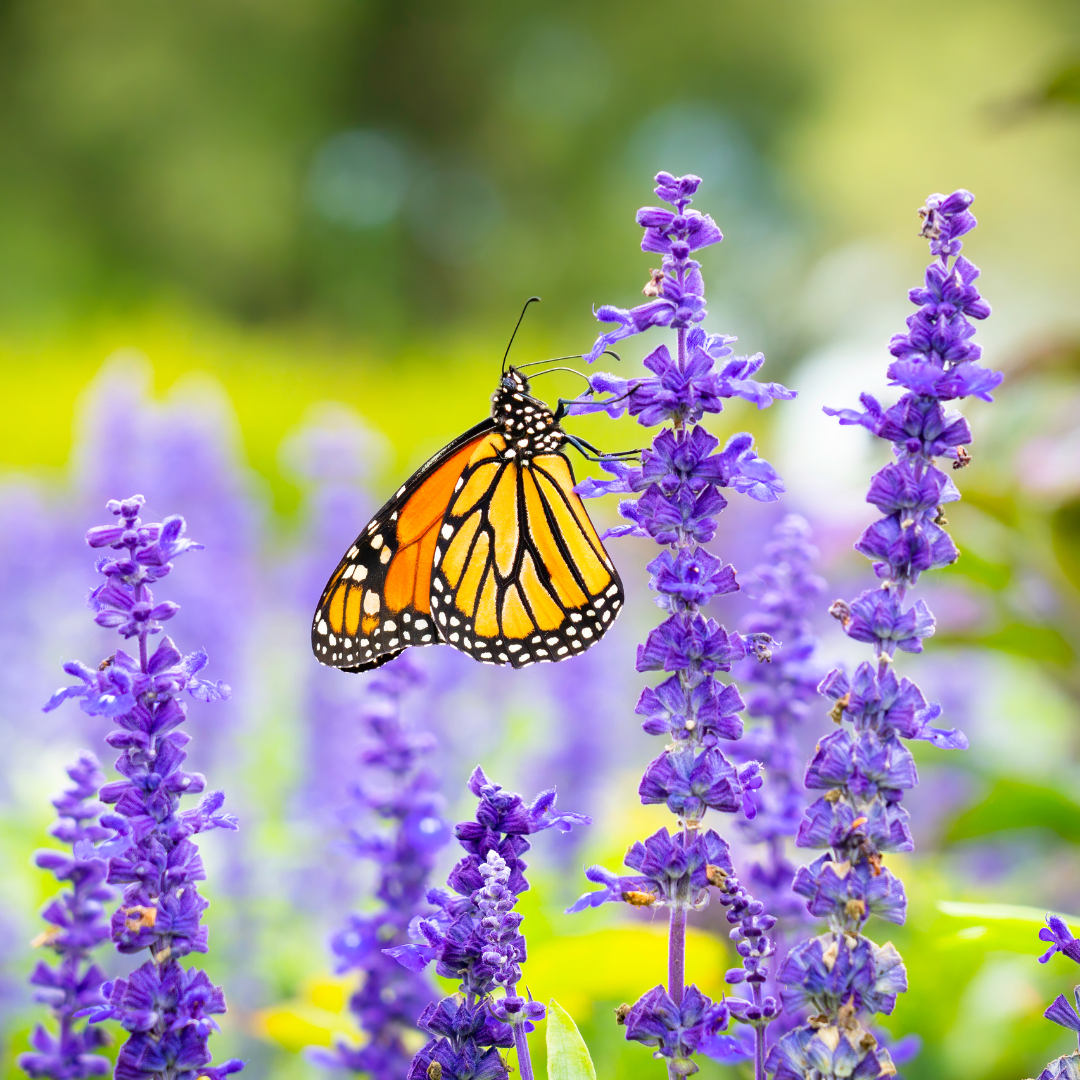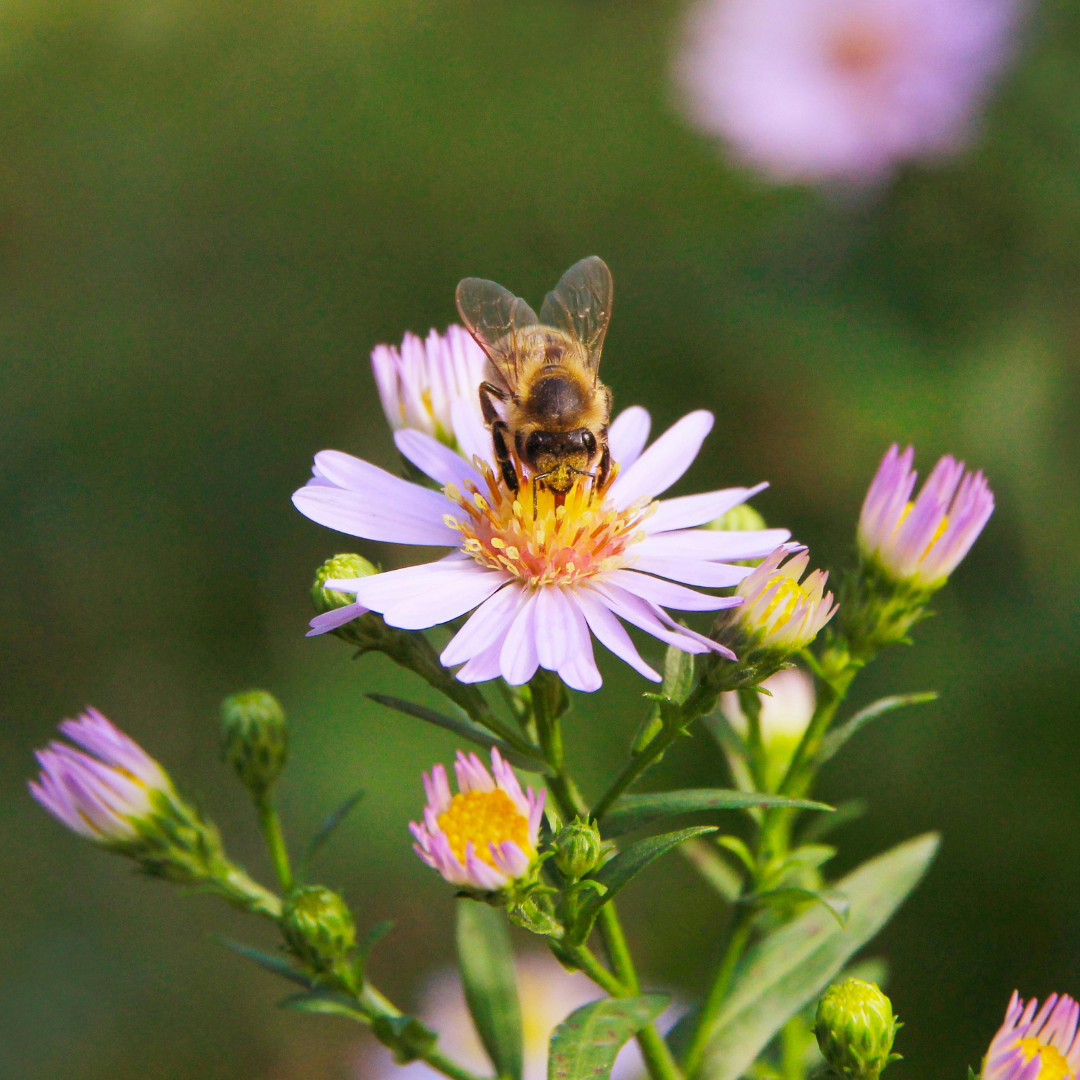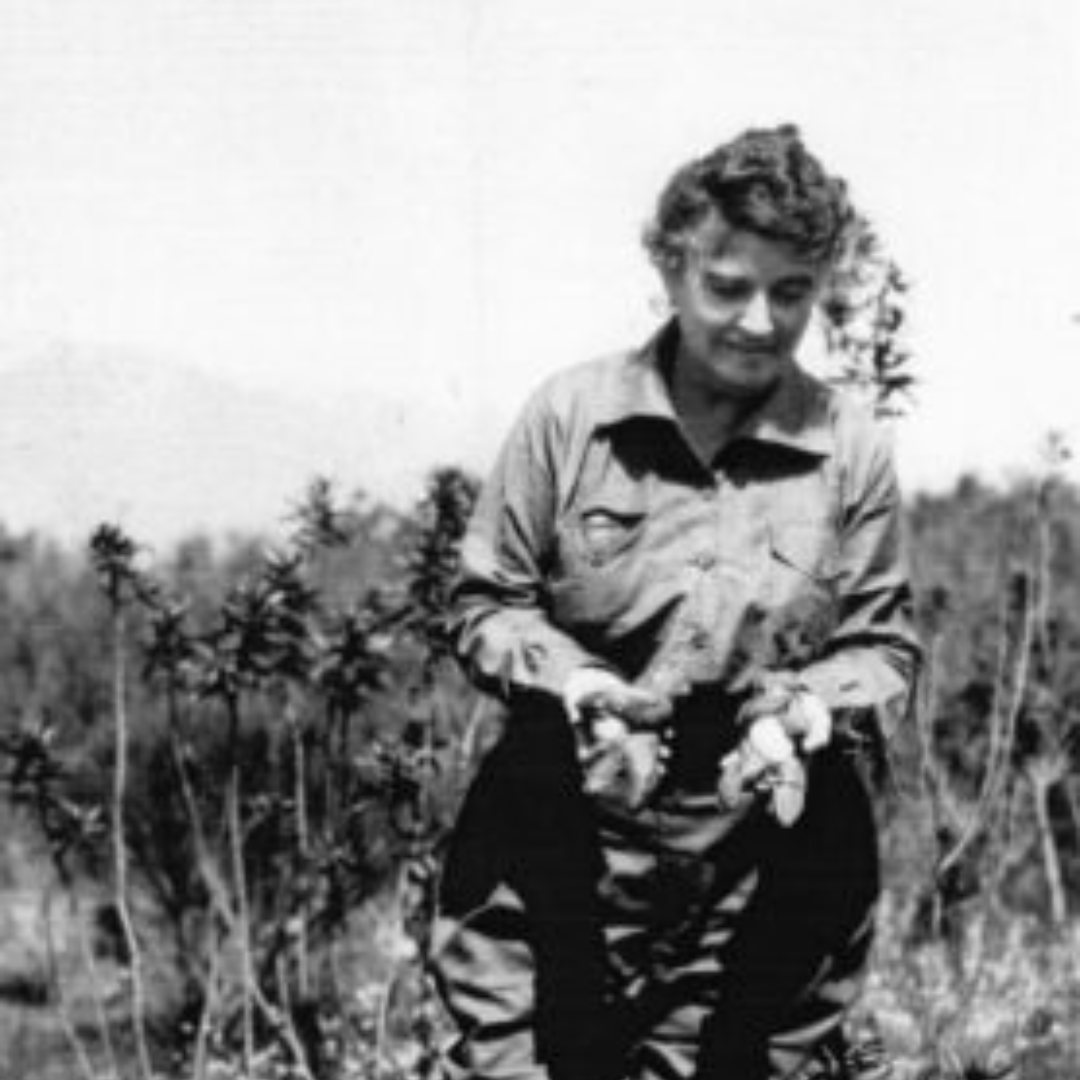Gardening for Wildlife
If you are looking for a method to bring more beauty and nature into your backyard, consider gardening for wildlife.
What does it mean to garden for wildlife?

Gardening for wildlife means creating a garden that supports local wildlife, such as birds, butterflies, and bees. This is done by providing food, water, shelter and safe places to raise young wildlife.
According to the Indiana Wildlife Federation, a beneficial method of gardening for wildlife is by using plants native to the area. Native plants are vital to our ecosystems because:

- Native plants have developed important, often crucial, relationships with our wildlife
- Native plant species in your home garden offers an opportunity to fulfill our responsibility as stewards of our environment
- Native plants give you a unique way to experience the wonder of wildlife at home
- Native plants support our dwindling pollinators, provide host opportunities for insects who have lost their natural habitats, and are beautiful flowers and grasses you can be proud to have on your property
The Indiana Wildlife Federation states:
“Since our native species are best suited for the soil and weather conditions in Indiana, they are the perfect plants to grow in your yard. They require no fertilizer, no pesticides, and less water than non-native species, all while attracting and supporting Indiana’s wildlife.”

Here are a few of the plants listed by the Indiana Wildlife Federation as native to our community:
- Downy Sunflower
- Showy Goldenrod
- Royal Catchfly
- Pink Turtlehead
- Swamp Aster
- Climbing Prairie Rose
- Winged Sumac
- Purple Prairie Clover
The following materials at your Yorktown Public Library on gardening for wildlife will help you get started:
On the Libby App:

Bringing Nature Home: How You Can Sustain Wildlife with Native Plants by Douglas Tallamy (eBook)
Tallamy reveals the unbreakable link between native plant species and native wildlife--native insects cannot, or will not, eat alien plants. When native plants disappear, the insects disappear, impoverishing the food source for birds and other animals. As development and habitat destruction accelerate, there are increasing pressures on wildlife populations. Luckily, there is an important and simple step we can all take to help reverse this alarming trend: everyone with access to a patch of earth can make a significant contribution toward sustaining biodiversity by simply choosing native plants. By acting on Tallamy's practical and achievable recommendations, we can all make a difference.
The Wildlife Gardener by Kate Bradbury (eBook)
Filled with beautiful photos, this book is a practical guide for anyone who wants to make a home for wildlife in their garden--even if they don't have a lot of space. Divided into sections on shelter, food, and water, it includes advice on the best nectar and pollen plants to grow, dos and don'ts of bird feeding and information on organic methods of pest control. The book also includes ten projects--with step-by-step pictures--that will help encourage wildlife, such as creating a bumblebee nester, making a green roof, and building a hedgehog box and a mini field guide, which will help you identify the birds and other creatures you're likely to spot in your garden. The Wildlife Gardener gives tips on particular species, explaining what to look out for and how to cater for specific birds, mammals, bees, butterflies, moths, and pond life.
The Humane Gardener by Nancy Lawson (eBook)

In this eloquent plea for compassion and respect for all species, journalist and gardener Nancy Lawson describes why and how to welcome wildlife to our backyards. Through engaging anecdotes and inspired advice, profiles of home gardeners throughout the country, and interviews with scientists and horticulturalists, Lawson applies the broader lessons of ecology to our own outdoor spaces. Detailed chapters address planting for wildlife by choosing native species; providing habitats that shelter baby animals, as well as birds, bees, and butterflies; creating safe zones in the garden; cohabiting with creatures often regarded as pests; letting nature be your garden designer; and encouraging natural processes and evolution in the garden. The Humane Gardener fills a unique niche in describing simple principles for both attracting wildlife and peacefully resolving conflicts with all the creatures that share our world.
Native Trees of the Midwest: Identification, Wildlife Value and Landscaping by Sally S. Weeks (eBook)
Native Trees of the Midwest is a definitive guide to identifying trees in Indiana and surrounding states, written by three leading forestry experts. Descriptive text explains how to identify every species in any season and color photographs show all important characteristics. Not only does the book allow the user to identify trees and learn of their ecological and distributional attributes, but it also presents an evaluation of each species relative to its potential ornamental value for those interested in landscaping. Since tree species have diverse values to wildlife, an evaluation of wildlife uses is presented with a degree of detail available nowhere else.
The Midwest Native Plant Primer: 225 Plants for an Earth-Friendly Garden by Alan Branhagen (eBook)

Bring your garden to life--and life to your garden! Do you want a garden that makes a real difference? Choose plants native to our Midwest region. The rewards will benefit you, your yard, and the environment--from reducing maintenance tasks to attracting earth-friendly pollinators such as native birds, butterflies, and bees. Native plant expert Alan Branhagen makes adding these superstar plants easier than ever before, with proven advice that every home gardener can follow. This incomparable sourcebook includes 225 recommended native ferns, grasses, wildflowers, perennials, vines, shrubs, and trees. It's everything you need to know to create a beautiful and beneficial garden. This must-have handbook is for gardeners in Arkansas, Illinois, Indiana, Iowa, Kansas, Michigan, Minnesota, Missouri, Nebraska, North Dakota, Ohio, South Dakota, and Wisconsin.
Butterfly Gardening with Native Plants: How to Attract and Identify Butterflies by Christopher Kline (eBook)
Have you ever wanted to draw butterflies to your home, but you haven't known where to start? This book will help you. This book is a fun how-to guide for attracting butterflies with native plants that includes more than 150 color photographs. Suitable for kids and adults!
IN THE ADULT COLLECTION:
The Natural Heritage of Indiana by Marion T. Jackson

The Natural Heritage of Indiana is the first survey of the natural beauty, heritage, and environmental problems of the state. Lavishly illustrated with hundreds of color photographs by some of the state's best nature photographers, as well as maps, drawings, and diagrams, it also contains essays by 38 of Indiana's leading scholar-teachers and environmental practitioners. This book explores the Indiana landscape, past and present, the seven defined natural regions of the state, and the current plant and animal life, while pondering how the land has been affected by people and how to protect what remains. The Natural Heritage of Indiana is not only a celebration of natural wonders and nature's beauty, it is also a record of misuse and ignorance and a call to arms for those interested in preserving Indiana's environment.
BONUS: This material is also on DVD.
The Indiana Gardener’s Guide: Revised Edition by Jo Ellen Meyers Sharp
This book features over 180 plant selections from annuals and perennials to trees and water plants with large, full-color photographs, specific advice on planting, growing, and caring of each plant and a quick reference symbols to indicate the plant's sun requirements. The book also offers added benefits, such as attracting birds or butterflies.
While discussing Indiana wildlife, this is the perfect moment to highlight Indiana’s best-selling author Gene Stratton-Porter:

- Born Geneva Grace Stratton on August 17,1863
- American writer
- Nature photographer
- Naturalist from Wabash County, Indiana.
- In 1917, Stratton-Porter urged legislative support for the conservation of Limberlost Swamp and other wetlands in Indiana.
Take a quick road trip this summer (about an hour’s drive from Yorktown) to visit Limberlost in Geneva, Indiana -- the land that inspired Stratton-Porter’s writing.
You can also learn more about Gene Stratton-Porter by checking out her books at your Yorktown Public Library:
IN THE ADULT COLLECTION:
Nature’s Storyteller: The Life of Gene Stratton-Porter by Barbara Olenyik Morrow
As a young girl growing up on an Indiana farm, Gene Stratton-Porter found a purpose for her life - sharing the outdoors with others through writing and photography and working to conserve nature for the generations to come. By the time she died at age sixty-one, Stratton-Porter was one of the country's best-known authors, with a following of fifty million readers worldwide.

Gene Stratton- Porter: Novelist and Naturalist by Judith Reick Long
When Gene Stratton-Porter died at the age of sixty-one on 6 December 1924, she was one of America's most popular novelists and the best known of the many Indiana authors. At the time of her death her publishers estimated that she had more than fifty million readers-in the United States and many more throughout the world. In the last seventeen years of her life her books sold at a rate of 1,700 copies a day. Although her novels were not well received by literary critics, the traditional values and reverence for nature that they reflect continue to attract an admiring and responsive audience. Many of her novels have been issued in new editions, and demand among antique collectors for original editions is intense. However, until now, this famous Hoosier has been neglected by biographers. Judith Reick Long and the Indiana Historical Society seek to correct this injustice with this book. This book is a balanced account of Stratton-Porter that shows both her strengths and her weaknesses and offers a few surprises along the way.
ON THE LIBBY APP:
Moths of the Limberlost by Gene Stratton-Porter (eBook)

This story paints a vibrant picture of Gene’s delight in the moths as she loves, cares for, breeds and studies the creatures. The first chapter is an introduction while the second chapter is an overview of the natural history of moths, however, it is only marginally technical and she interweaves the chapter with her own experiences. In the final thirteen chapters she focuses on one moth per chapter, the moths that have most caught her interest. It is a beautiful window into the person she was and her love of nature.
A Girl from Limberlost by Gene Stratton-Porter (eBook)
This is the story of a girl of the Michigan woods; a buoyant, loveable type of the self-reliant American. Her philosophy is one of love and kindness towards all things; her hope is never dimmed.
“In the writing of this book I have done my best. Now is the time for concerted action on the part of everyone who reads it.” – Gene Stratton-Porter

Furnishing both food and shelter for wildlife by planting a wildlife garden assists in promoting a healthy ecosystem, and it gives you the opportunity to connect with nature.
Seek out that balance that nature offers.
Wildlife gardening may be your pathway.
